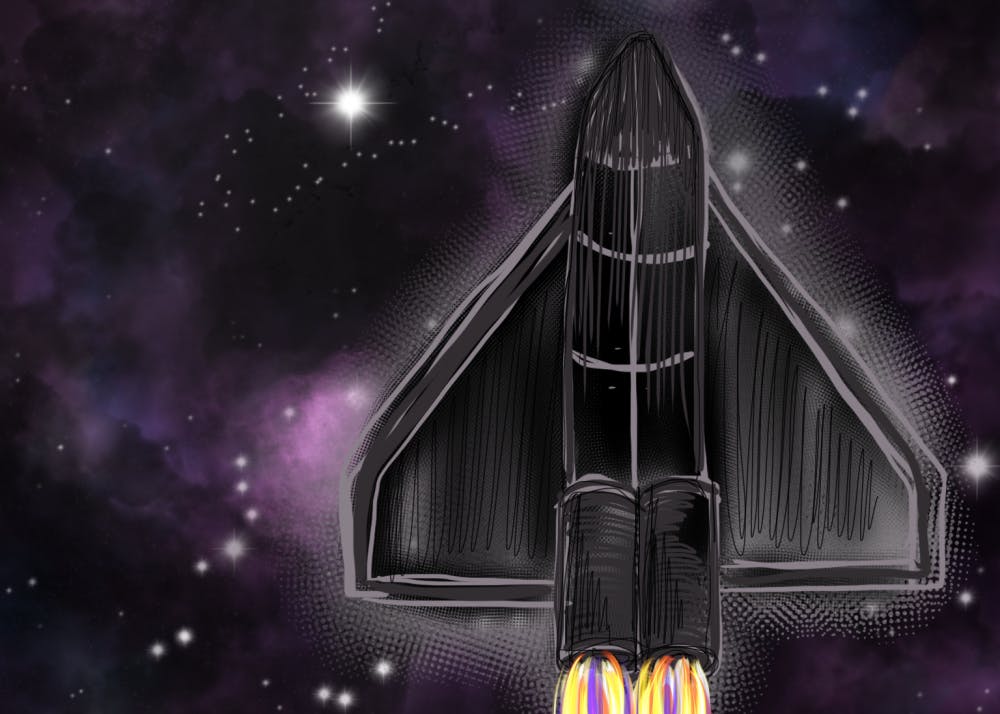You’ve all heard about it by now. Opportunity, the NASA Mars rover designed to last a mere 90 Mars days, was officially pronounced dead after 15 Earth years of crawling across the Red Planet.
As we honor this fallen hero, we should consider the potential our corn and soybean state of Indiana possesses when it comes to the future of space travel and research. If we set our minds to it, Indiana could make a name for itself as another hub of space exploration in America.
If you think that the Midwest has nothing to offer with regard to space research, think again. For example, it was the Big Ear radio telescope at Ohio State that heard the famous Wow! signal in 1977. This was a mysterious 72-second radio burst from an unknown source in the galaxy that generated excitement it could be an alien communication.
In addition, the Glenn Research Center in Cleveland is one of 10 major centers of NASA. Its 3,000 personnel work on projects “in propulsion, aeronautics, materials and structures, communications, power and energy storage, and biomedical sciences.”
If Ohio can do it, Indiana can too, especially since we have a high-ranking School of Aeronautics and Astronautics at Purdue University.
And right now, the Hoosier economy is strong enough to support the bold endeavor of attracting new jobs in a variety of fields of space technology.
Manufacturing alone in Indiana has seen a significant bounce-back since the Great Recession. In January of 2018, the state held 532,900 manufacturing jobs, up by almost 100,000 from eight years before. According to a panel of IU economists, 2019 will continue to be an economically successful year for the state, and they do not foresee automation replacing a lot of jobs in the near future.
With things going so well, Indiana can dream bigger. Tech is already making big strides in the state. Remember that Indianapolis was a top 20 finalist for Amazon HQ2, after 250 cities applied. So we’re obviously doing something right.
As government and commercial space enterprises become more feasible, our state has an opportunity to establish itself as an innovator in space development.
Here’s one possible path: Indiana could incentivize space start-ups to form partnerships with Purdue University, and in this way the companies and university would help one another. These companies could be involved in a whole range of relevant fields, such as propulsion, aeronautics, satellite design and life-support systems.
As these companies grow, they can be contracted to do work for NASA, placing themselves at the center of U.S. space technology. With Ohio’s Glenn Research Center right next door, forming connections with NASA is logistically quite convenient.
I’m being rather vague about what exact fields of space research and development Indiana could command, because this will all depend on what is important at a given time. But one field that looks especially enticing, although bold, is that of asteroid mining.
Asteroid mining, while not yet achieved, has been forecast to generate hundreds of billions of dollars given that many asteroids are rich in resources such as iron, gold and platinum. There’s no reason why Indiana couldn’t get in on this, or even why we couldn’t pioneer the endeavor.
Imagine Hoosiers designing the circuits of robotic mining equipment and calculating the best trajectories to the asteroid belt. Picture them building the necessary drills and excavators to grind away the asteroids’ surface and testing new solutions in enormous vacuum chambers. Imagine all of that happening here.
Isn’t it tempting? Let’s get started.






